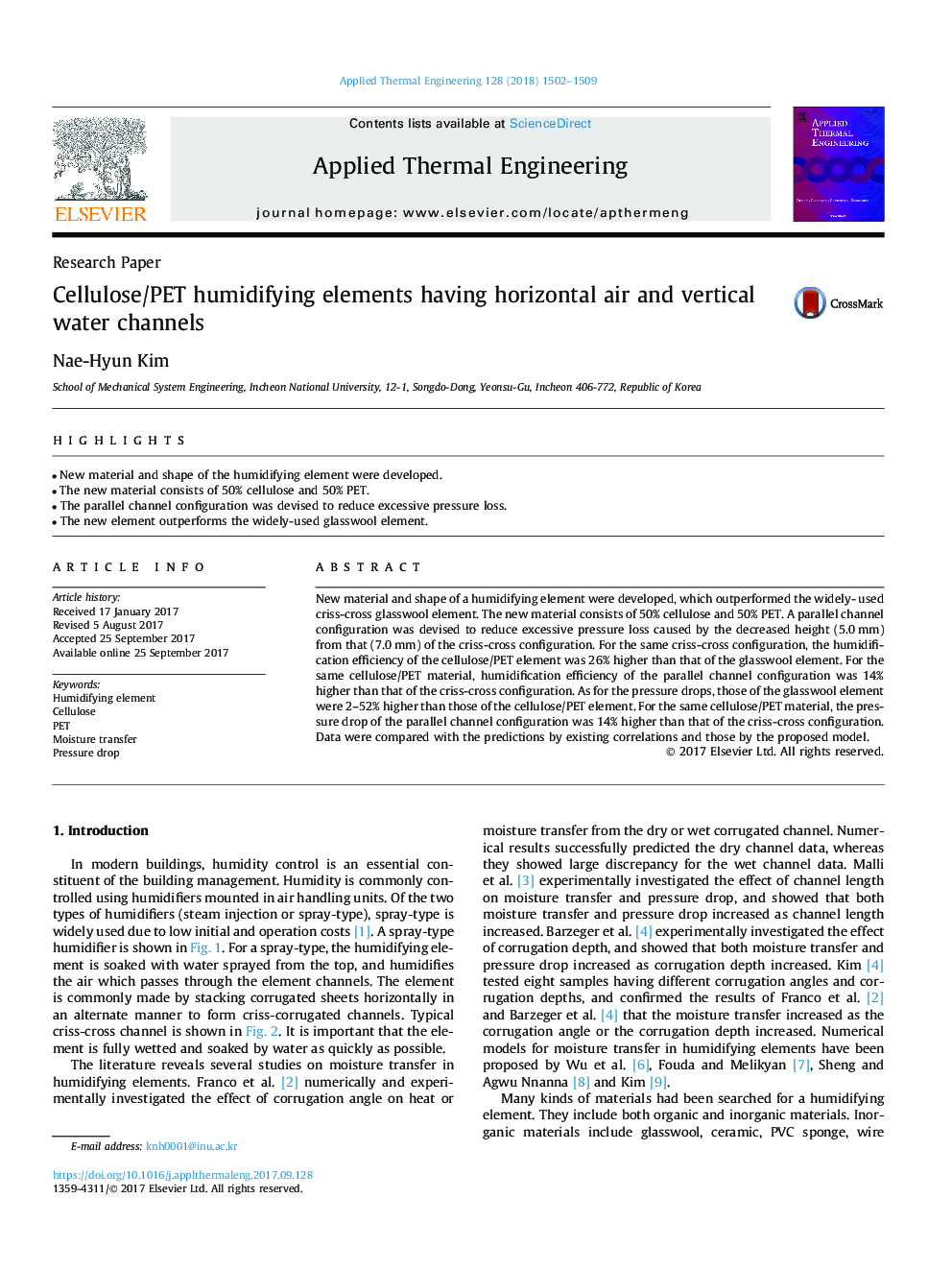| Article ID | Journal | Published Year | Pages | File Type |
|---|---|---|---|---|
| 4990893 | Applied Thermal Engineering | 2018 | 8 Pages |
â¢New material and shape of the humidifying element were developed.â¢The new material consists of 50% cellulose and 50% PET.â¢The parallel channel configuration was devised to reduce excessive pressure loss.â¢The new element outperforms the widely-used glasswool element.
New material and shape of a humidifying element were developed, which outperformed the widely- used criss-cross glasswool element. The new material consists of 50% cellulose and 50% PET. A parallel channel configuration was devised to reduce excessive pressure loss caused by the decreased height (5.0Â mm) from that (7.0Â mm) of the criss-cross configuration. For the same criss-cross configuration, the humidification efficiency of the cellulose/PET element was 26% higher than that of the glasswool element. For the same cellulose/PET material, humidification efficiency of the parallel channel configuration was 14% higher than that of the criss-cross configuration. As for the pressure drops, those of the glasswool element were 2-52% higher than those of the cellulose/PET element. For the same cellulose/PET material, the pressure drop of the parallel channel configuration was 14% higher than that of the criss-cross configuration. Data were compared with the predictions by existing correlations and those by the proposed model.
